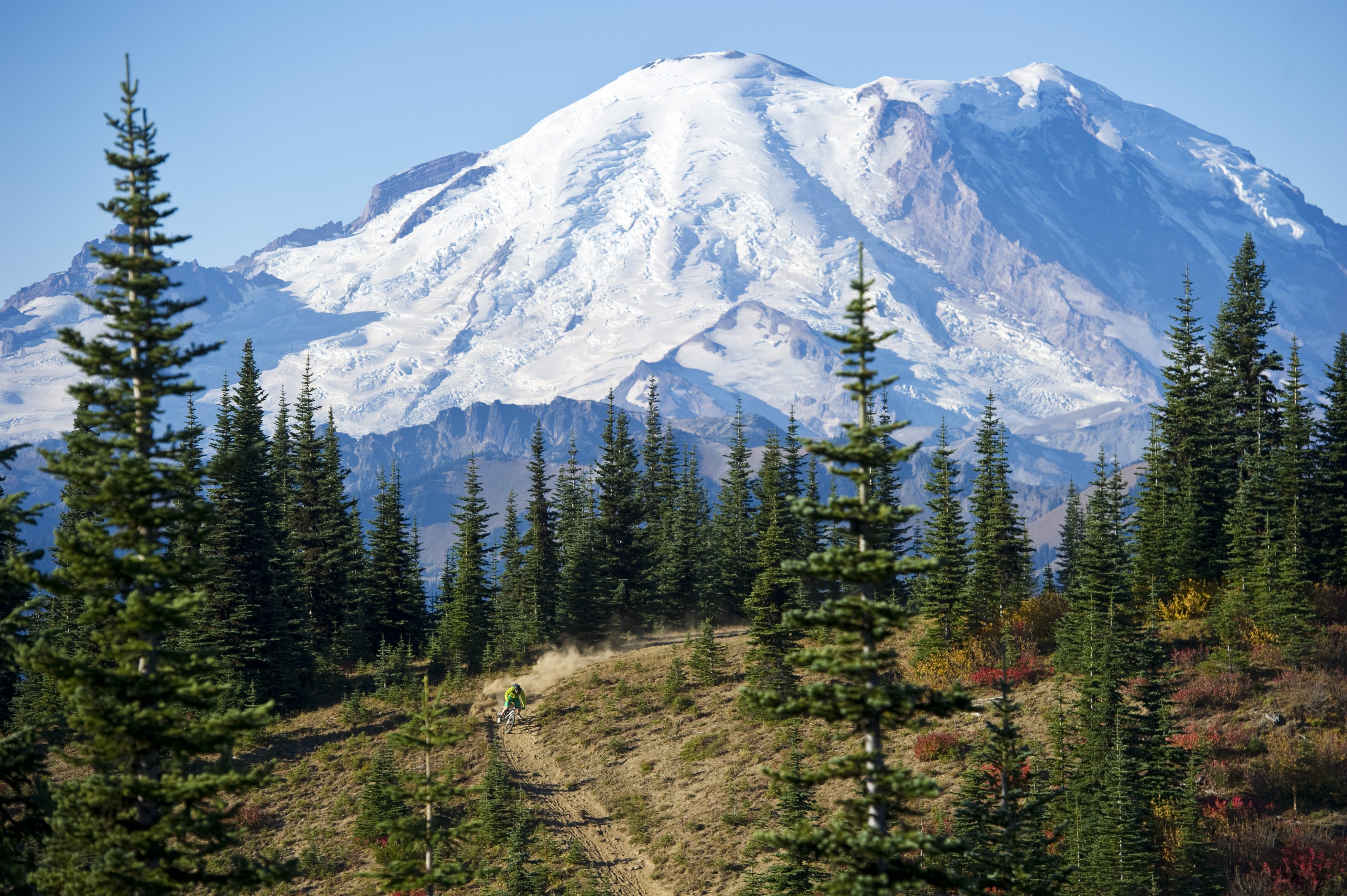
Hi Colin, digital photographs have become a mass product. The little printed pictures below them quickly disappear into the drawer and unfortunately only rarely see daylight. The idea behind CODEX is the publication of photographs through the development of a CODEX wallbook, which lifts the images onto a new stage and ultimately gives them the well-deserved attention.
Working as a photographer, you have a great deal of expertise in the field of photography – what moved you to your job and what thoughts do you have about CODEX Wallbooks?
My name is Colin Meagher and I´m a professional photographer. I grew up in the pacific north-west and from the time I was about ten years old I knew I was going to be a photographer. I started out shooting a variety of sports because that´s what drew me and eventually I still do on shooting mountain biking and from there I eventually went to the World Cup mountain bike race circuit – that would keep me really, really busy in the summers – which made it hard for me to ride – But when I got home, that was when all the trail conditions were perfect and I would ride as much as I could and enjoy the high country until the snow came – and that´s what inspired this particular piece of work, „Fall into winter“.
I like the CODEX as a medium to present my pictures because it gives me I like the CODEX as a medium for displaying my work because it allows me to tell more than just a one-dimensional story. You´ve got two images to play with. So for example in this opening two- page spread of mount Rainier you can see in one shot how gorgeous the country is around the mountain and on another shot you can see how massive the mountain actually is, even though both images are taking the same distance from the mountain.
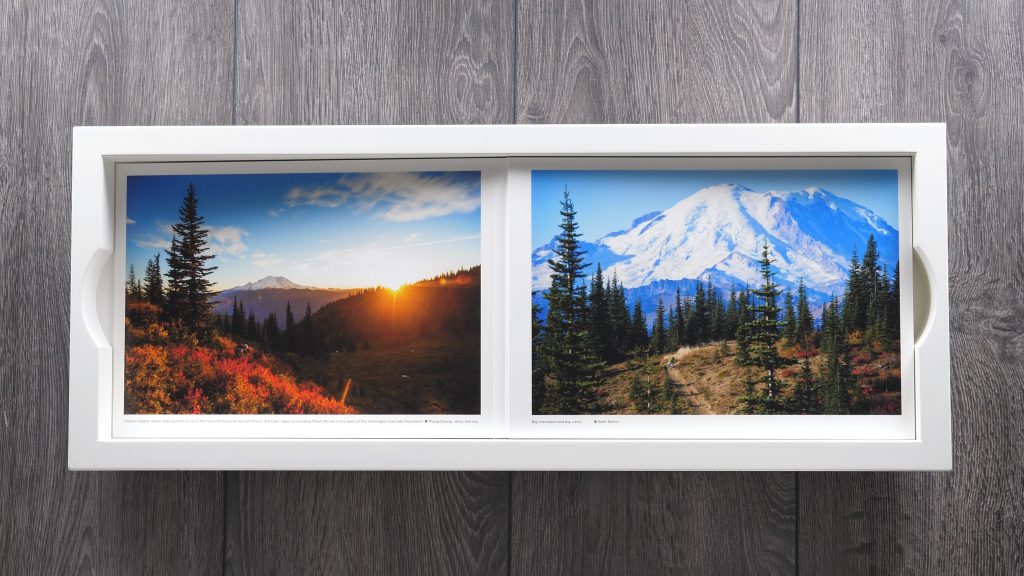
They´re one the same trail and then no more than hundred yards apart – The two-page spread allows you to really show both a macro and a micro perspective so on the one hand, I´ve got like a more widespread landscape view that really shows the trail but then I can put another shot in here that allows you to see the detail of what´s happening around this trail. There are other things like when you´re mountain biking you´re really focused on the trail but when it´s a more pedestrian section of the trail say an area where you´re climbing you can look around and really admire the scenery in the landscape around you so having a two-page format allows me to show both of those things – the interaction of the person in the environment and the environment that they are interacting with.
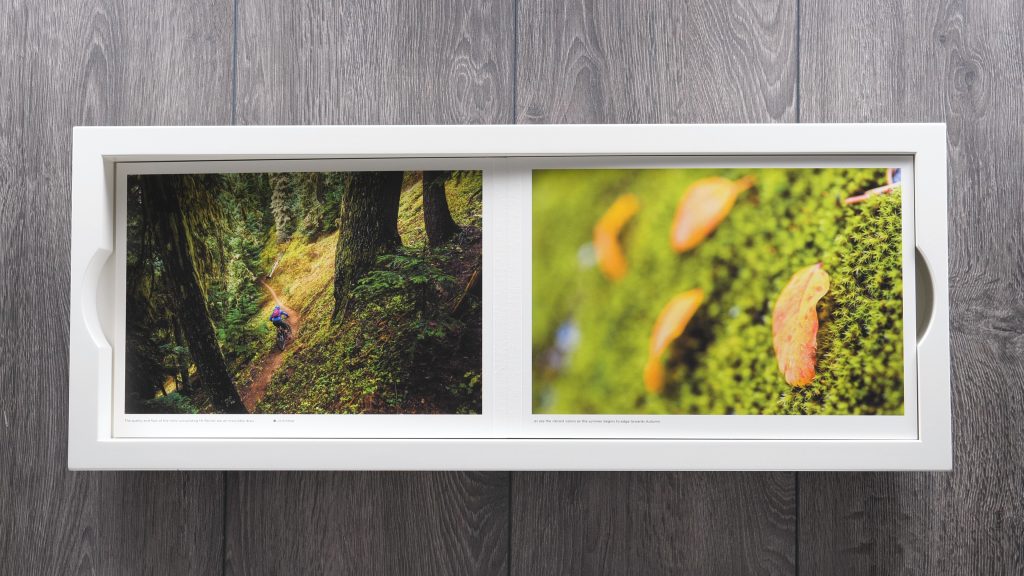
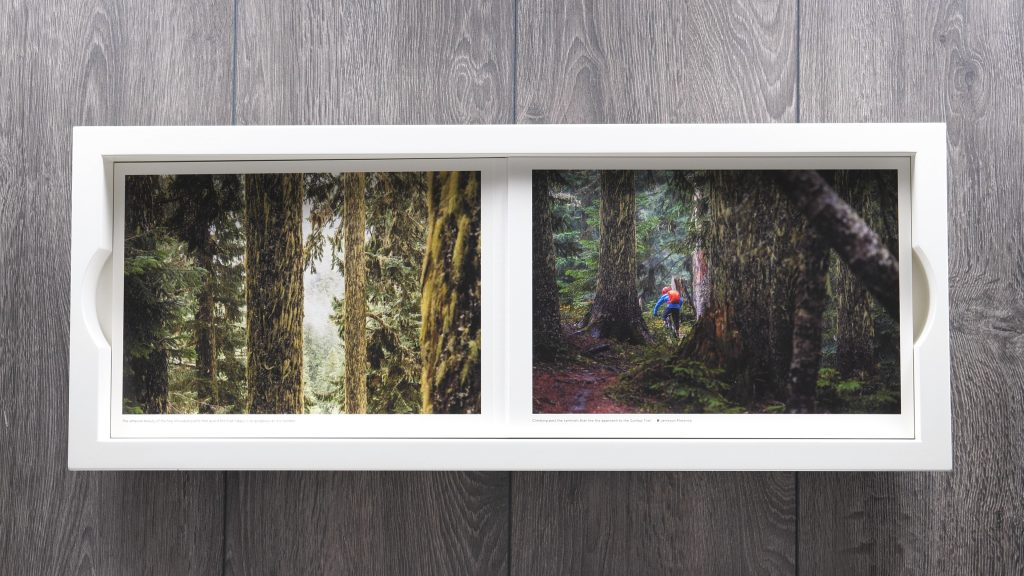
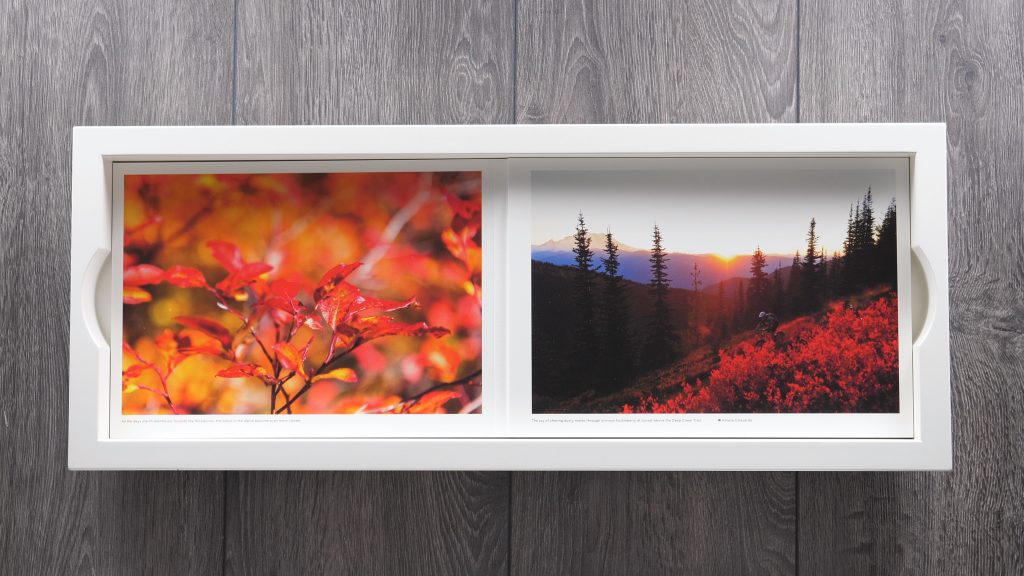
As you get deeper in the fall you can again experience that red-wild imagery as the fall colors really take hold but you can also really enjoy the landscape that the rider is spending time in. Again as you get deeper into more technical trail you can´t really look at everything that surrounds you. You have to focus a hundred percent on the trail in front of you but all that scenery is still around you and this beautiful two page spread format allows you to see both perspectives – the technical trail that dance with the bike over the roots and rocks as well as all the fall foliage the mood, the mist, the moss – you can see everything.
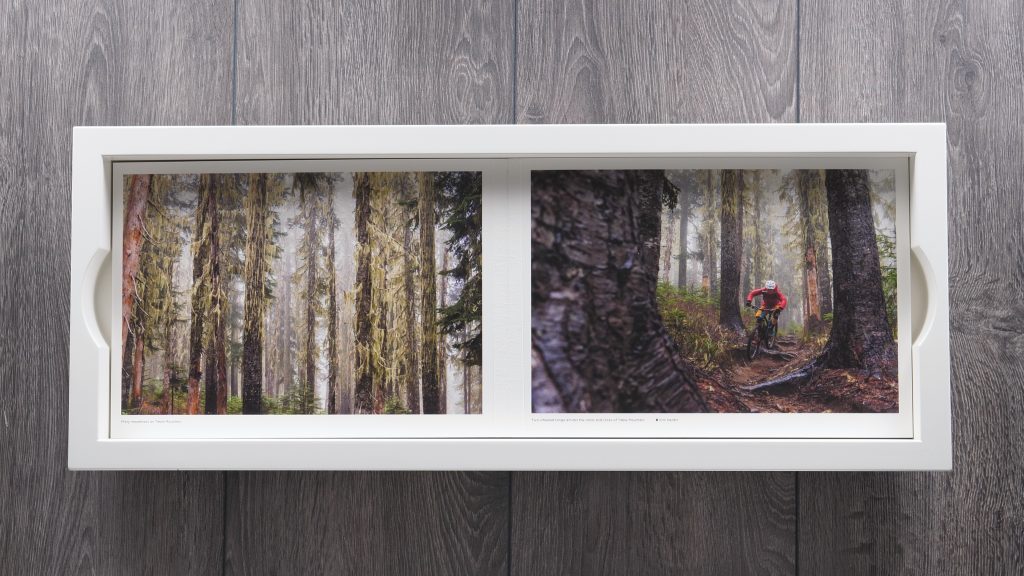
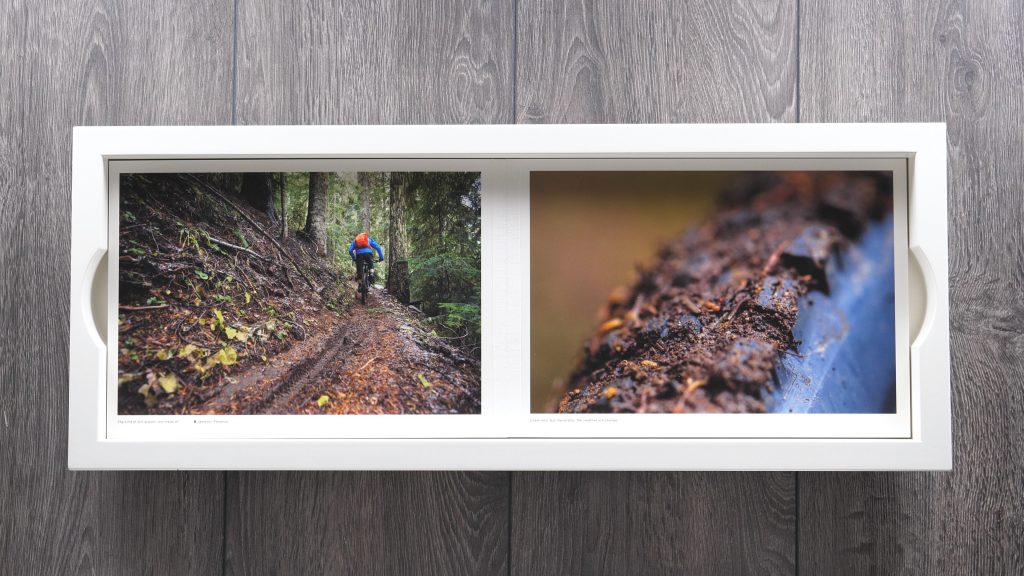
Another nice thing about the two-page format is being able to show different textures. On the one hand, I´ve got a trail here with a tire track cutting through the loam and then I can contrast that with a close-up shot of the loam clinging to the tires treads.
Other things again that macro detail in the wider environment what you can´t necessarily tell with the composition of the water droplets on the tree branch and then the corresponding shot of the cyclist.
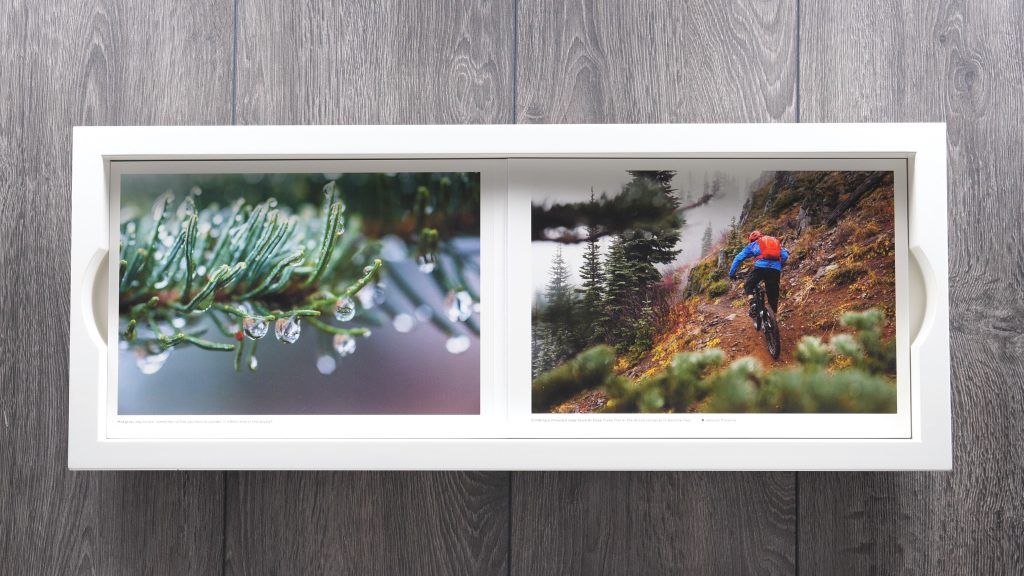
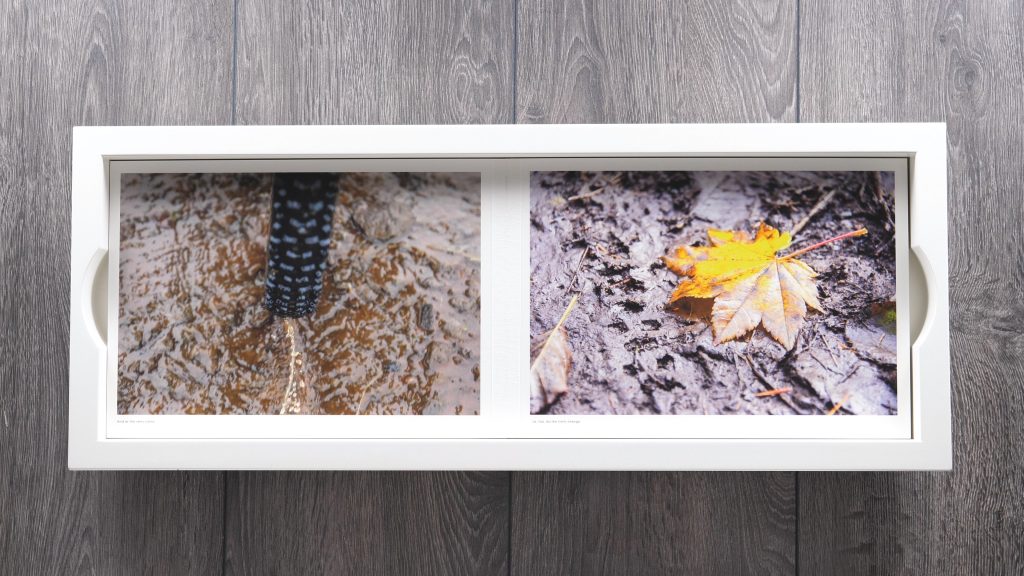
You can also really play with textures. On the one hand I´ve got a wet trail, on the other hand, I have a muddy tire track – they go hand in hand they´re different sections of trails obviously but they speak volumes about what´s happening and having that two-page format allows me to express both of these concepts simultaneously. I can also show two different perspectives of the same scene.
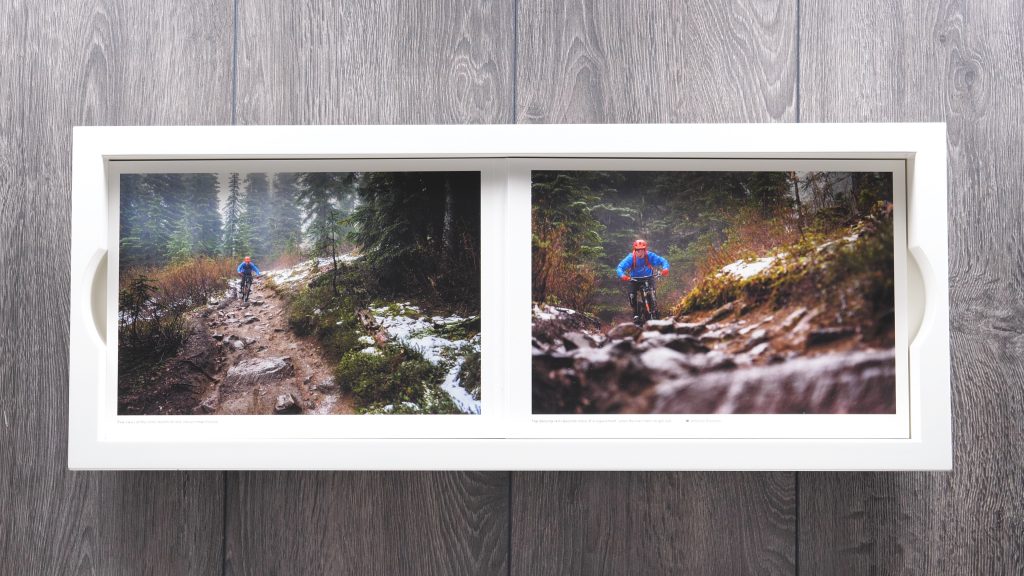
On the one hand here I´ve got a wider landscape view of the rider tackling a section of trail but on the right-hand facing page I have a different perspective of the exact same section of trail. I couldn´t do that without having a two-page format. The two-page format also allows for good storytelling – the left-hand image here is literally the first flake of snow that was dropping that day.
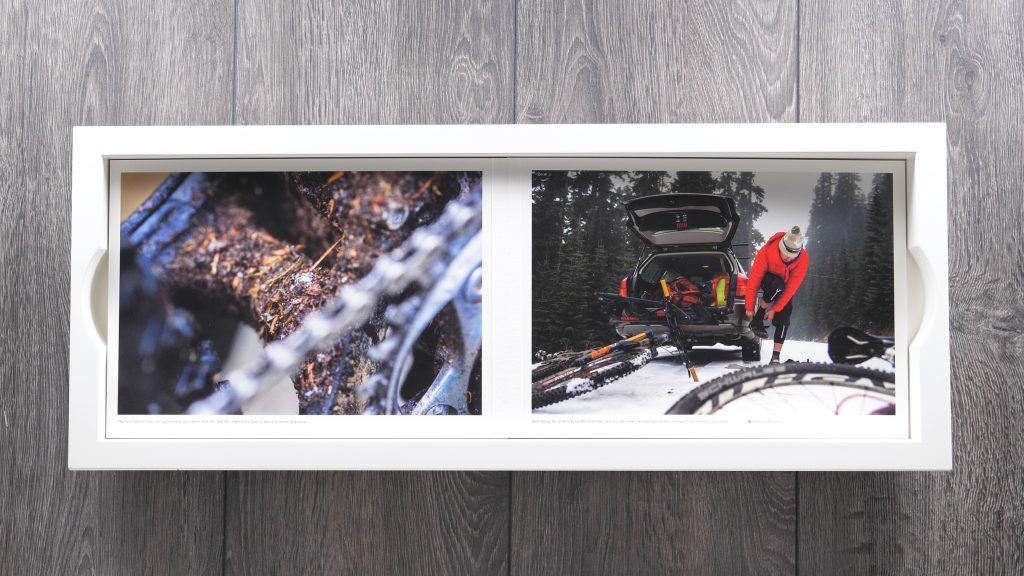
The right-hand page is us getting ready to go ride and knowing that we´re gonna get snowed on because that first flake had just landed while we were unloading the bikes. And again it´s all about storytelling – that´s what we´re doing here. You´re able to more completely tell people what´s happening with two images presented at the same time versus a single image. They both play off each other, they complement each other and they tell the same story without fighting each other and that´s difficult to achieve.
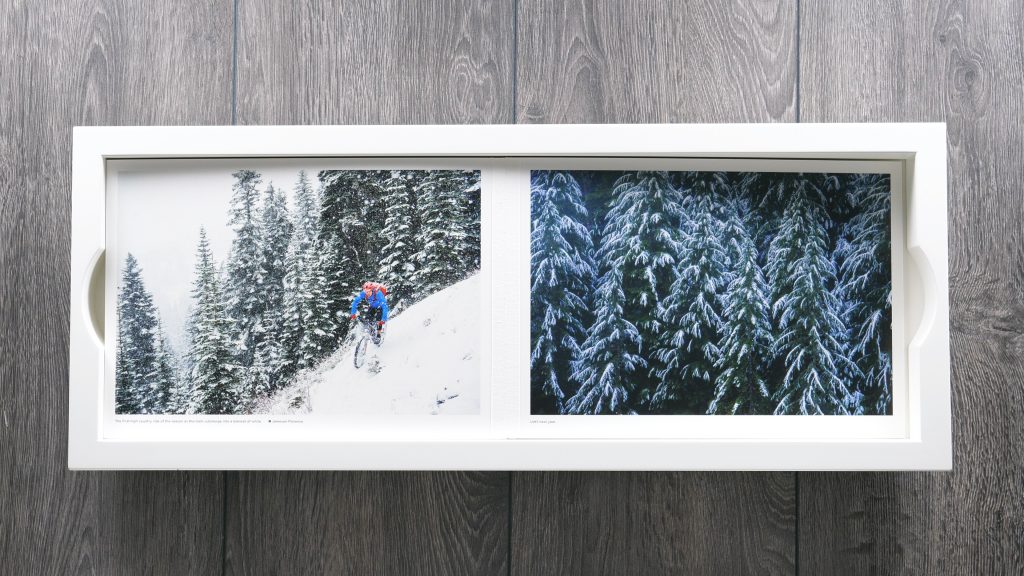
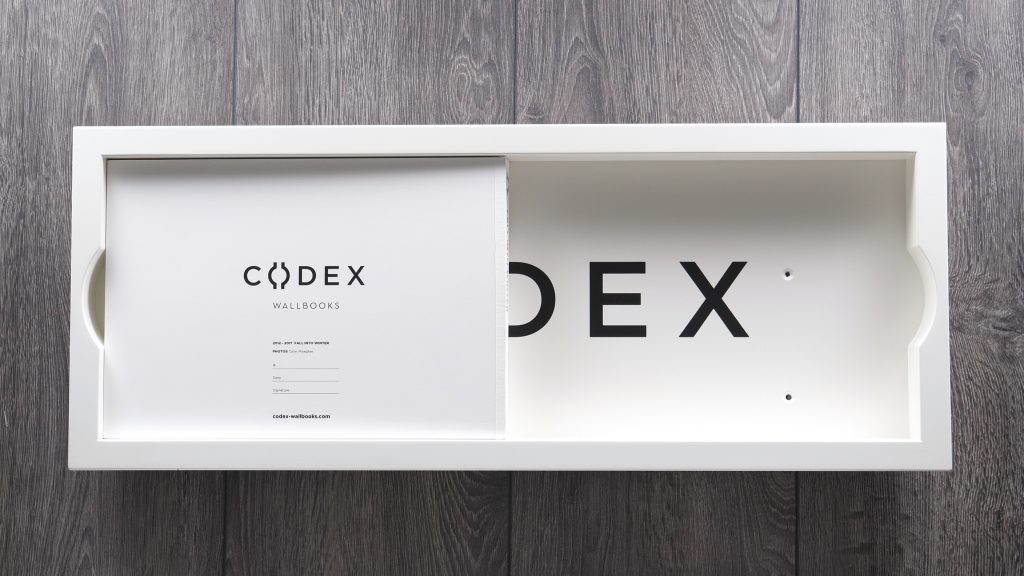
The End.


